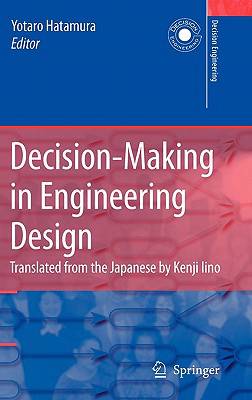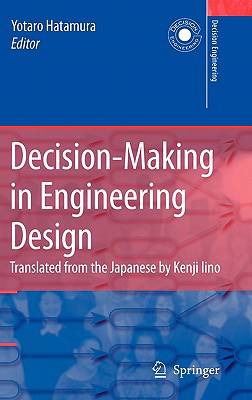
Je cadeautjes zeker op tijd in huis hebben voor de feestdagen? Kom langs in onze winkels en vind het perfecte geschenk!
- Afhalen na 1 uur in een winkel met voorraad
- Gratis thuislevering in België vanaf € 30
- Ruim aanbod met 7 miljoen producten
Je cadeautjes zeker op tijd in huis hebben voor de feestdagen? Kom langs in onze winkels en vind het perfecte geschenk!
- Afhalen na 1 uur in een winkel met voorraad
- Gratis thuislevering in België vanaf € 30
- Ruim aanbod met 7 miljoen producten
Zoeken
€ 195,95
+ 391 punten
Omschrijving
This book is a sequel to The Practice of Machine Design, and The Practice of Machine Design, Book 3 - Learning from Failure. It deals with what happens inside the human mind during such activities as design and production, and how we reach decisions. Unlike other regular machine design textbooks or handbooks that describe how to accomplish good designs, the present volume explains what the designer thinks when making design decisions. A design starts with a vague concept and gradually takes shapes as it proceeds, and during this process the mind extracts elements and makes selections and decisions, the results expressed in sketches, drawings, or sentences. This book aims at exposing the reader to the processes of element extraction, selection, and decision-making through real-life examples. Such a book has never been published before. An explicit description of the processes of making decisions, on the contrary, has been greatly needed by designers, and the managers of design groups have been much aware of such a lack. The non-existence of this type of book in the past is due to the following three reasons: the benefit of describing the mind process of design was never made clear, the method of such clarification was unknown, and no one ever invested the vast energy for producing such a manifestation. Under these circumstances, we the members of the "Practice of Machine Design Research Group" boldly tackled the problem of expressing the decision processes in design and have documented our findings in this book.
Specificaties
Betrokkenen
- Vertaler(s):
- Uitgeverij:
Inhoud
- Aantal bladzijden:
- 265
- Taal:
- Engels
- Reeks:
Eigenschappen
- Productcode (EAN):
- 9781846280009
- Verschijningsdatum:
- 24/11/2005
- Uitvoering:
- Hardcover
- Formaat:
- Genaaid
- Afmetingen:
- 160 mm x 239 mm
- Gewicht:
- 521 g

Alleen bij Standaard Boekhandel
+ 391 punten op je klantenkaart van Standaard Boekhandel
Beoordelingen
We publiceren alleen reviews die voldoen aan de voorwaarden voor reviews. Bekijk onze voorwaarden voor reviews.








